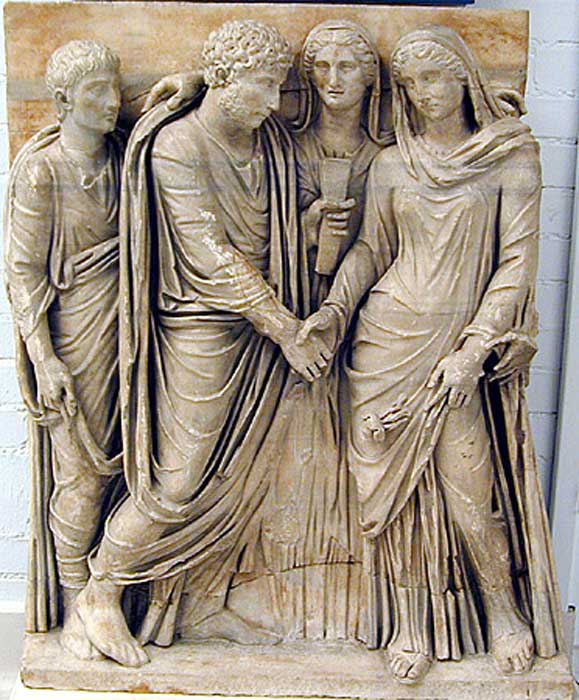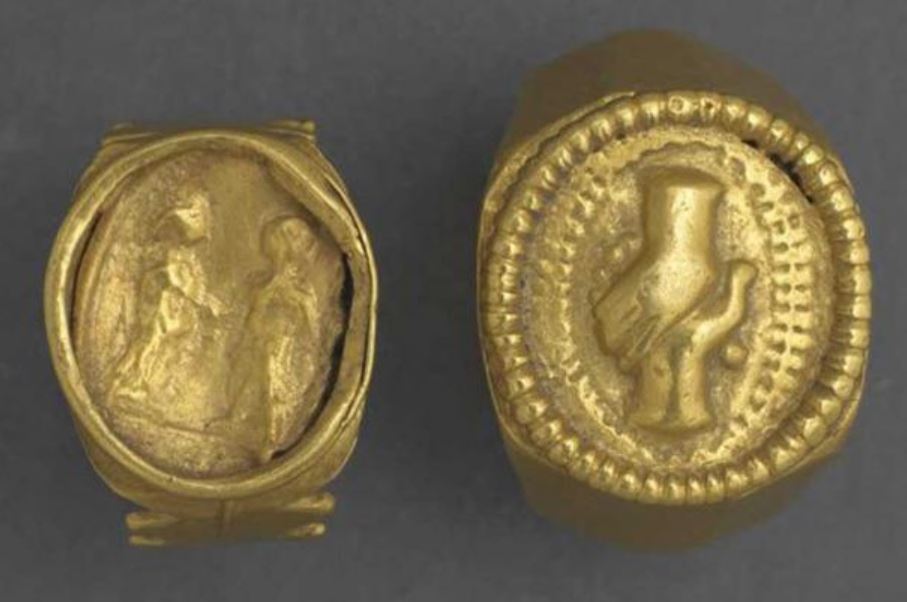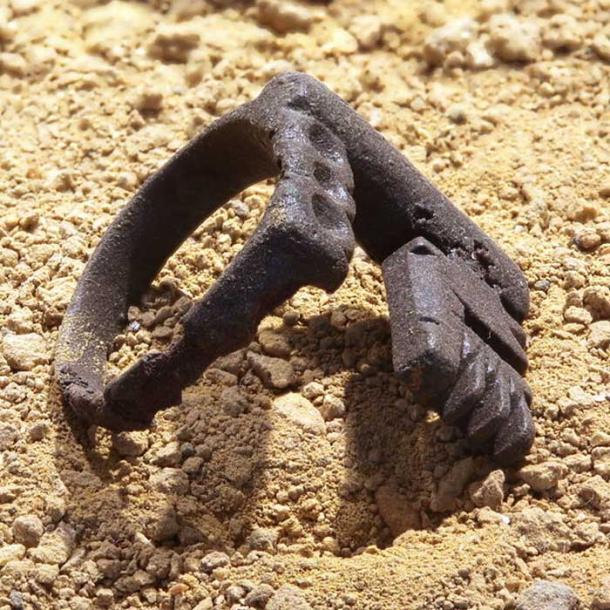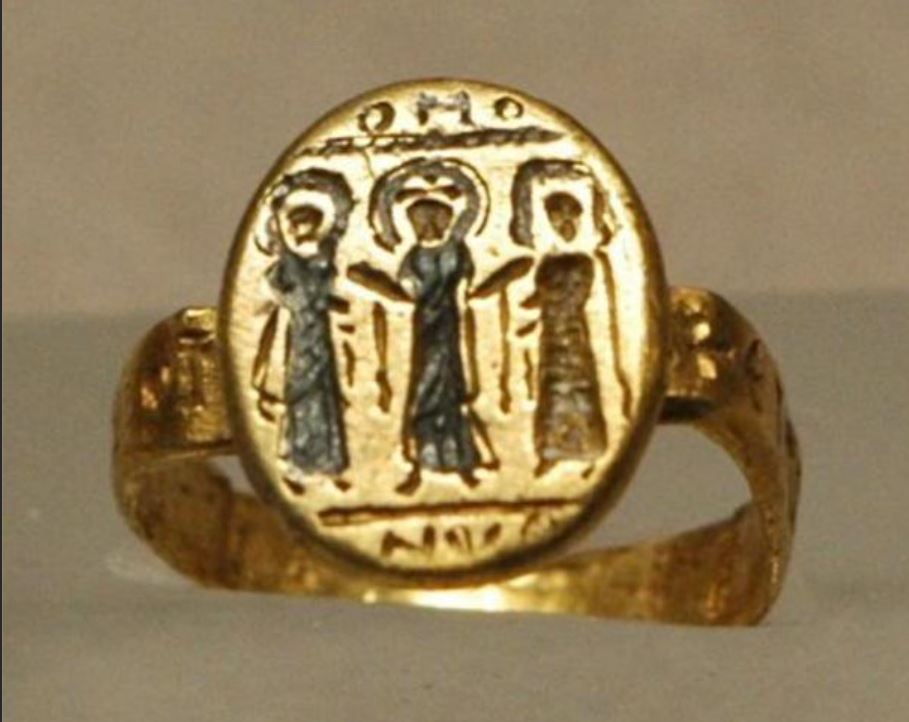
If you are married, you might telegraph that fact by wearing a ring on a specific finger. For people living the United States, it is traditional to wear a wedding ring on the fourth finger of the left hand (counting the thumb as a finger)–what we refer to as the “ring finger”–but people in different countries and different cultures might wear a wedding ring on either the left or right hand and on another finger. In much of Europe, for example, wedding rings are worn on the right hand. The same is true for people in India. In some countries, engagement rings are worn on one hand and then switched to the other hand during or after the wedding ceremony to signify a change in marital status.
But where did the tradition of wedding rings come from? How did it develop?
The Barbarian Theory
Ancient Germanic tribes were referred to as barbarians by the Romans. Barbarians referred to any person or group of people whom the Romans considered uncultured–which was just about anyone who didn’t belong to the Empire. The Barbarian Theory of wedding ring origin relies on the belief that in some ancient Germanic tribes, a man who wanted a wife but could not find one would simply go and raid another village and bring a woman home. As women didn’t particularly appreciate being kidnapped and often tried to escape, the solution was to put her in an ankle shackle (the “ring”) and chain the shackle to something sturdy so that she couldn’t run off.
Egypt and the Ceremonial Disposable Ring

What is not a theory, however, is that the Egyptians believed the circle to be a symbol of eternity, and, for them, marriage was eternal. Historians believe that the first wedding ring was used in Egypt during the Third Dynasty, in the year 2,800 B.C. The rings of that time were mostly ceremonial and made out of hemp or reed. In time, Egyptians began using leather, bone, or ivory to create longer lasting rings.
Alexander the Great and the Devotion Ring
When Alexander the Great conquered Egypt, he learned about the tradition of using rings to symbolize the eternal marriage union and brought that tradition back to Greece. Soon after, the Greeks started using rings to represent commitment to their loved ones. They mostly used copper or iron and often had the iron rings etched or shaped with pictures of keys which symbolized that the wife was now in charge of the household.
Romans and the Golden Ring

Romans admired the Greeks, so they conquered them and adopted many aspects of Greek culture. They liked the Greek tradition of wedding rings, but they changed the copper and iron rings to gold. By the end of the Roman Empire, golden rings had become common and incredibly elaborate. Numerous gold rings were found when the ancient city of Pompeii was excavated–rings that had survived for 2,000 years.
One of the most popular types of Roman rings portrayed the union of a married couple as clasped hands (see image). The clasped hands design enjoyed a revival in popularity during the second half of the 20th century when they were referred to as “friendship rings.”
Having a gold ring to slip on a beloved wife’s finger was so important to Roman men that they very often went broke to buy them. For the lower classes, this gold ring would probably be the only gold the couple would ever possess. The Roman Christian priest, Tertullian, wrote that Roman wives would wear their gold rings in public but use an iron ring (annulus pronubus) at home.
Romans were also the first to put their ring on the fourth finger (what we call the “ring finger”). They believed that the vein of love, the vena amoris, connected the fourth finger to the heart.

Key To Your Heart or Storehouse?
Romans were the first to engrave their rings with names and images representing their heritage or occupation. It was also common to have a key image engraved on the wedding band. While that might sound romantic (“My dear, you are the key to my heart!”) the more practical reason for the key inscription was that it meant that the wife had the right and the key by Roman Law to help herself to her husband’s grain, linens, and other goods as she pleased. In fact, Roman Law dictated that a wife had the right to half of her husband’s wealth. It took nearly twenty centuries after the fall of the Roman Empire for women to retrieve that level of equality.
The Evolution of the Gold Ring

It was not until the 800s A.D. that the gold wedding ring again resurfaced when Christians began using them in their own wedding ceremonies. At first, the rings were very elaborate. These early rings echoed the Roman tradition with engravings of linked hands or other custom designs. The Catholic Church, however, was not keen on such extravagance and saw the ring as a simple token of fidelity and eternity. Thus, over time, the rings became simpler.

Interestingly enough, wedding bands for men only became common during the 20th century, especially among soldiers leaving for war.
Reference To Learn More:
Wedding ring – Wikipedia
The Origin of Wedding Rings: Ancient Tradition or Marketing Invention? – GIA 4Cs
The Origins of Wedding Rings And Why They’re Worn On The 4th Finger Of The Left Hand (todayifoundout.com)
Roman Engagement and Wedding Rings: Joining Hands and Hearts | Ancient Origins (ancient-origins.net)